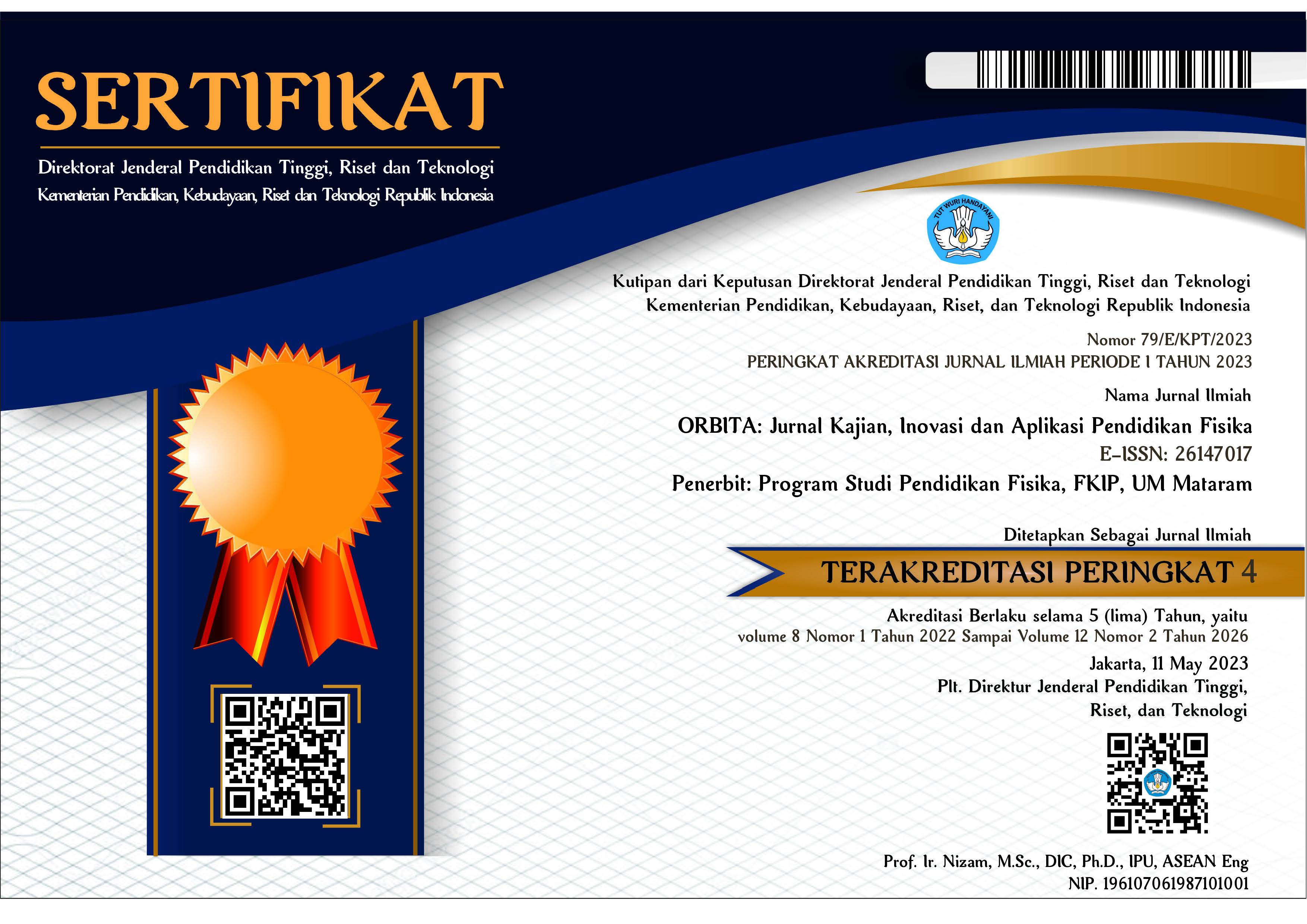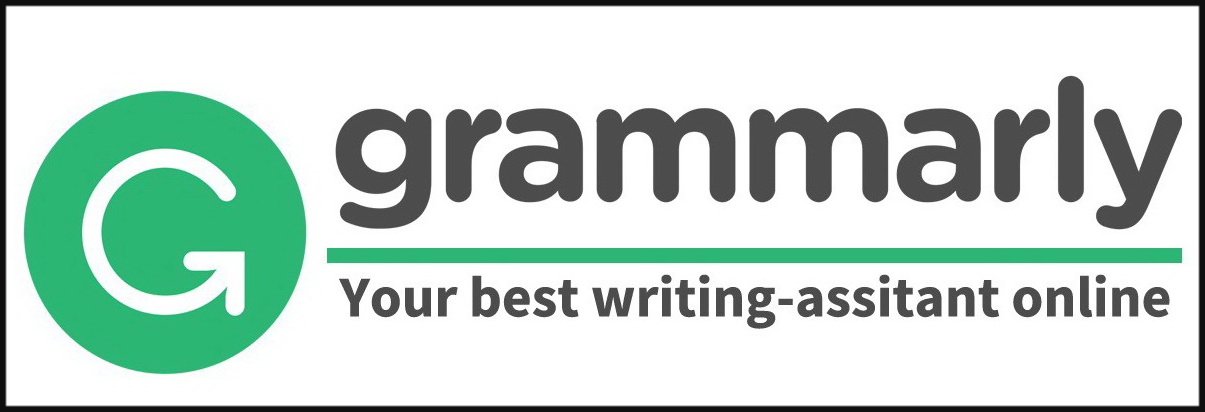ANALISIS KEMAMPUAN BERPIKIR KRITIS PESERTA DIDIK DALAM PEMECAHAN MASALAH FLUIDA DINAMIS DENGAN MODEL PEMBELAJARAN STUDENT ORIENTED
Abstract
ABSTRAK
Mengajar berpikir kritis kepada peserta didik di sekolah menengah telah menjadi perhatian dalam beberapa dekade terakhir. Pembelajaran menggunakan model student oriented diharapkan mampu menggerakkan peserta didik berpikir kritis dan selanjutnya melakukan investigasi dalam pembelajaran. Penelitian ini bertujuan menganalisis kemampuan berpikir kritis peserta didik dalam pemecahan masalah fluida dinamis dengan model pembelajaran student oriented. Tujuan ini akan dicapai dengan melakukan penelitian eksperimen dengan desain one group pretest-postest. Penelitian melibatkan 17 peserta didik kelas XI MIPA 8 di SMA Negeri 2 Mataram yang menjadi sampel penelitian. Kemampuan berpikir kritis diukur menggunakan 10 instrumen tes yang berbentuk essay. Instrumen tes yang digunakan telah teruji validitas dan reliabilitasnnya. Data kemampuan berpikir kritis dianalisis secara deskriptif dan statistik. Hasilnya menunjukkan bahwa penerapan model pembelajaran student oriented pada pemecahan masalah fluida dinamis pada peserta didik mampu meningkatkan kemampuan berpikir kritis dan hasil belajarnya.
Kata kunci : kemampuan berpikir kritis; model pembelajaran student oriented
ABSTRACT
Teaching critical thinking to secondary school has been a concern in the last few decades. Learning using the student-oriented model is expected to be able to move students to think critically and then carry out investigations in learning.The experimental research with one group pretest-posttest design. This research involving 17 students of class XI MIPA 8 at SMA Negeri 2 Mataram as a research sample. Critical thinking ability were measured using 10 essay test items. The test instrument used has been tested for validity and reliability. The data of critical thinking ability were analyzed descriptively and statistically. The results showed that the application of the student-oriented learning model to solving dynamic fluid problems in students was able to improve their critical thinking skills and learning outcomes.
Keywords: critical thinking ability; student oriented learning model
Keywords
Full Text:
PDFReferences
Abrami, P.C., Bernard, R.M., Borokhovski, E., Wade, A., Surkes, M.A., Tamim, R., & Zhang, D. (2018). Instructional interventions affecting critical thinking skills and dispositions: A stage 1 meta-analysis. Review of Educational Research, Vol.78, No.4,1102-1134.
Aktamis, H. & Ergin, O. (2008). The Effect of scientific proccess skill education on student’s scientific creativity, science attitudes, and academic achivements. Asia-Pacific Forum on Science Learning and Teaching, Vol.9 No.1, 1-21.
Bahtiar, & Prayogi, S. (2012). Evaluasi hasil pembelajaran sains (IPA). Mataram: CV. Dimensi Raya.
Bensley, D.A., & Murtagh, M.P. (2018). Guidelines for a scientific approach to critical thinking assessment. Teaching Psychology, Vol. 39 No. 2, 5-16.
Borich, G. D. (1994). Observation skills for effective teaching. Columbus, OH: Merrill
Ennis, R.H. (1989). Critical thinking and subject specificity: Clarification and needed research. Educational Researcher, Vol. 18, No.3, 4-10.
Fahim, M. & Masouleh, N.S. (2018). Critical thinking in higher education: a pedagogical look. Theory and Practice in Language Studies, Vol. 2, No. 7,1370-1375.
Fraenkel, J.R., Wallen, N.E., & Hyun, H.H. (2012). How To Design And Evaluate Research In Education (8th ed.). New York: McGraw-Hill
Glassner, A., & Schwartz, B. (2018). What stands and develops between creative and criatical thinking? Argumentation. Thinking Skills and Creativity, Vol. 2, No. 1,10-18.
Hake, R.R., (2008). Analyzing change/gain scores. Retrieved from
Halpern, D.F. (1998). Teaching critical thinking for transfer across domains. American Psychologist, Vo. 53, No. 4, h.449-455.
Koray, Ö. & Köksal, M.S. (2018). The effect of creative and critical thinking based laboratory applications on creative and logical thinking abilities of prospective teachers. Asia-Pacific Forum on Science Learning and Teaching, Vol. 10, No. 1,1-13.
Klinger. Walter. (1997). Survei Metode Pengajaran dalam Ilmu Pengetahuan Alam. Erziehungswiss, Fakultat der Universtat, Erlangen-Nurnbe.
Kousoulas, F., & Mega, G. (2008). Creative and critical thinking in the context of problem finding and problem solving: A research among students in primary school. Retrieved from http://www.ep.liu.se/ecp/021/vol1/011/ecp2107011.pdf
McPeck, J. Teaching critical thinking: Dialogue & dialectic. New York: Routledge. Mitrevski, B. & Zajkov, O. (2011). Mathematics and science teachers’ concept of critical thinking. Bulgaria Journal of Physics, Vol.38, 318-324.
Prayogi, S. Yuanita, L., & Wasis. (2018). Critical Inquiry Based Learning: Model of learning to promote critical thinking ability of pre-service teachers. J. Phys.: Conf. Ser. 947,1-6.
Prayogi, S., Yuanita, L. & Wasis. (2018). Critical-Inquiry-Based-Learning: A model of learning to promote critical thinking among prospective teachers of physic. Journal of Turkish Science Education,15(1),43-56.doi: 10.12973/tused.10220a
Sendag S., Erol O., Sezgin S., & Dulkadir N. (2015). Preservice teachers’ critical thinking dispositions and web 2.0 competencies. Contemporary Educational Technology, Vol. 6, No.3, 172-187.
Šorgo, A. (2012). Scientific Creativity: The Missing Ingredient in Slovenian Science Education. European Journal of Educational Research, Vol. 1, No. 2,127-141.
Schmaltz, R. M., Jansen. E, & Wenckowski, N. (2017). Redefining critical thinking: Teaching students to think like scientists. Front. in Psych, Vol. 8 N0. 459, 1-4.
Thomas T. (2017). Developing first year students’ critical thinking skills. Asian Social Science, Vol. 7, No. 4, 26-35.
Türkmen, H. & Sertkahya, M. (2015). Creative thinking skills analysis of vocational high school students. Journal of Educational and Instructional Studies in the World, Vol. 5, No. 1, 74-84.
Wahyudi, Verawati, N.N.S.P., Ayub, S., & Prayogi. (2019). Development of inquiry-creative-process learning model to promote critical thinking ability of physics prospective teachers. Journal of Physics: Conf. Series 1108, 1-6. doi: 10.1088/1742-6596/1108/1/012005
Wechsler, S.M., Saiz, C., Rivas, S.F., Vendramini C.M.M., Almeida L.S., Mundim M.C., & Franco A. (2018). Creative and critical thinking: Independent or overlapping components? Thinking Skills and Creativity, Vol. 27,114-122.
Yuli, H., (2020). Kemampuan berpikir kritis momentum dan impuls ditinjau dari gaya belajar peserta didik dengan model Learnig cycle 5E, Jurnal orbita Ummat. Vol. 6 No.1,188-195
Zane, T. (2013). Implementing critical thinking with signature assignments. Salt Lake Community College, Springer.
DOI: https://doi.org/10.31764/orbita.v7i1.4598
Refbacks
- There are currently no refbacks.

This work is licensed under a Creative Commons Attribution-ShareAlike 4.0 International License.
______________________________________________________
ORBITA: Jurnal Pendidikan dan Ilmu Fisika
p-ISSN 2460-9587 || e-ISSN 2614-7017
This work is licensed under a Creative Commons Attribution-ShareAlike 4.0 International License.
EDITORIAL OFFICE:


























